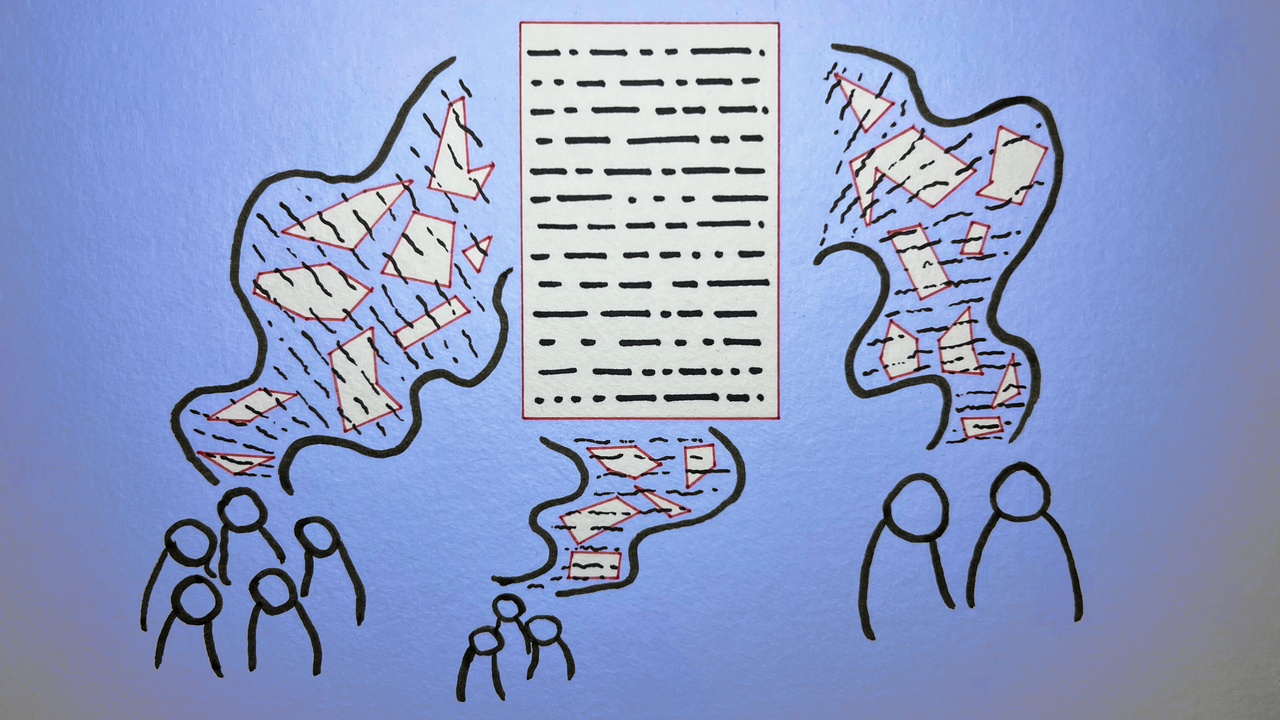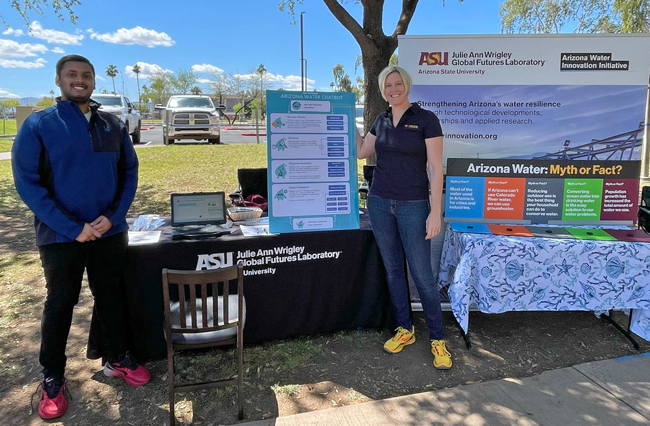
Questions about water in Arizona? An innovative new chatbot is here to help
From water quality to water supply, Arizona residents have many water-related questions that can sometimes be hard to find answers to. Starting today, a new Arizona-specific water chatbot is on the scene to help.
Developed by ASU researchers and supported by the Arizona Water Innovation Initiative (AWII) Impact Water - Arizona program, the Arizona Water Chatbot, or AZ Waterbot, is a tool that provides highly curated information in response to user-generated questions about Arizona water. The bot is designed to preserve the complexity of water information while providing a conversational interface for users.
Stephen Carradini, an associate professor of technical communication at ASU, focuses his research on emerging technologies. In particular, he investigates the ethics of technologies and how people integrate the latest technologies into businesses, workplaces, the public sphere and society at large.
Over the years, he has researched new technologies as they arise, including social media, smart phones and crowdfunding. Carradini has recently turned his attention to artificial intelligence and delved into tool development.
That means that when Claire Lauer, user experience lead for AWII, approached Carradini with an idea for a chatbot focused on responding to the questions that Arizonans have about water, he was ready to build it. But, first, he had to answer the question “why a chatbot?” for himself.
Carradini says when he first started the project in 2023, the novelty of a chatbot was appealing and something he hoped would help to spur interest in water issues.
“Water information needs to be distributed to Arizona residents in any way that it can,” says Carradini. “If a chatbot helps, I thought, then maybe that's a thing we should be doing.”

In addition, the AZ Waterbot fit in with another interest of Carradini’s – applying the ASU Charter in his own work.
“This is the most direct way yet that I've been able to apply what I really care about and try to really make a difference in people's lives,” says Carradini. “It’s a way to take responsibility for ongoing issues in the community.”
Carradini says that he does not see the chatbot as something that is labor replacing – a common critique of AI tools. Instead, he hopes the chatbot can help to leverage existing water information to increase the capacity of communities and institutions by answering questions that people have in a way that is both fun and efficient.
“I think about some of the folks we’ve worked with at state agencies or small municipalities who have produced great information but residents might have a hard time finding it,” says Carradini. “I hope the chatbot will amplify their efforts by making their resources more readily available.”
To build the chatbot, Carradini and his small team of student researchers first had to choose a large language model. They then got to work training it and guiding it to the best and most trustworthy information sources.
“We had to start by ensuring that harmful information is blocked from results. Then we moved on to training the chatbot on the information that we want it to use,” says Carradini. “We used a process called retrieval augmented generation to gather priority data that we wanted to supply, then decompiled the documents into a vector database. When people ask a question, it goes to those sources first.”
Through the building process, the researchers would sometimes find information that was old or incorrect.
“We have to constantly curate documents, because even if I was an expert on every single topic, I couldn't know exactly how the bot would put them together, because every question has a different answer based on the wording of the question,” says Carradini. “We do a lot of data management, checking through documents and making sure that things are working the way we expect.”
Despite the overall sense that AI projects are simple, Carradini says that is not the case.
“AI is not ‘set it and forget it,’ it's not an easy-bake oven,” says Carradini. “It is a very complicated thing with a lot of backend complexities.”
Carradini notes that there is a trade-off between the time spent developing the chatbot and the accuracy of information that it provides. In this case, he says that he and his team worked hard on accuracy.
“We wanted to spend extra time making sure the AZ Waterbot didn't give wrong answers. We put in safety checks and managed data,” says Carradini. “Our bot has the benefit of being scoped down to just water, but it also has the extra challenge of trying to do that for a public audience.”
The Arizona Water Chatbot is intended to answer both the common questions water experts anticipate, as well as those they might not even realize people have.
“Residents can get answers to questions about where our water comes from and how we make it safe to drink,” says Claire Lauer, “but also about whether we will run out of water, how it is distributed equitably and why our water tastes the way it does. If we can cultivate curiosity about water starting with the things people care about, they are more likely to ask questions about other important water issues.”
The AZ Waterbot development was funded by the Virginia G. Piper Charitable Trust through Impact Water-Arizona. The goal of Impact Water is to support projects that engage people and make water data and information available for Arizona residents.
“An important piece of this project is that the chatbot both answers questions and helps us gather data so we can provide more customized information and resources based on what people are concerned about or need to know more about,” says Susan Craig, Impact Water director. “As part of AWII’s goal of providing trustworthy water information, I am particularly happy that the chatbot includes links for more information, next steps and information sources.”
Looking toward the future, Carradini says that additions to the chatbot will include Spanish-language resources, both from existing documents as well as translations that the team is developing. The team is also developing a voice to text feature that will allow people to verbally ask their questions to the chatbot.
One of the most exciting features of the water chatbot is that it will also help researchers and information providers to better understand the kinds of questions that residents ask about their water, including questions that may not have readily available answers.
“I really see the AZ Waterbot as a support to everything else that's happening in the water information ecosystem,” says Carradini. “We are essentially a feedback gathering mechanism as well as an information providing mechanism. We are really looking forward to supporting that broader water information ecosystem as we go.”
Ask the AZ Waterbot a question
Please contact Claire Lauer with any comments or questions about the Arizona Water Chatbot.
Related:
AI's role in sustainable futures
AI experts at Arizona State University (video)
What Arizona residents want to know about water
The Arizona Water Chatbot: Helping Residents Navigate a Water Uncertain Future One Response at a Time